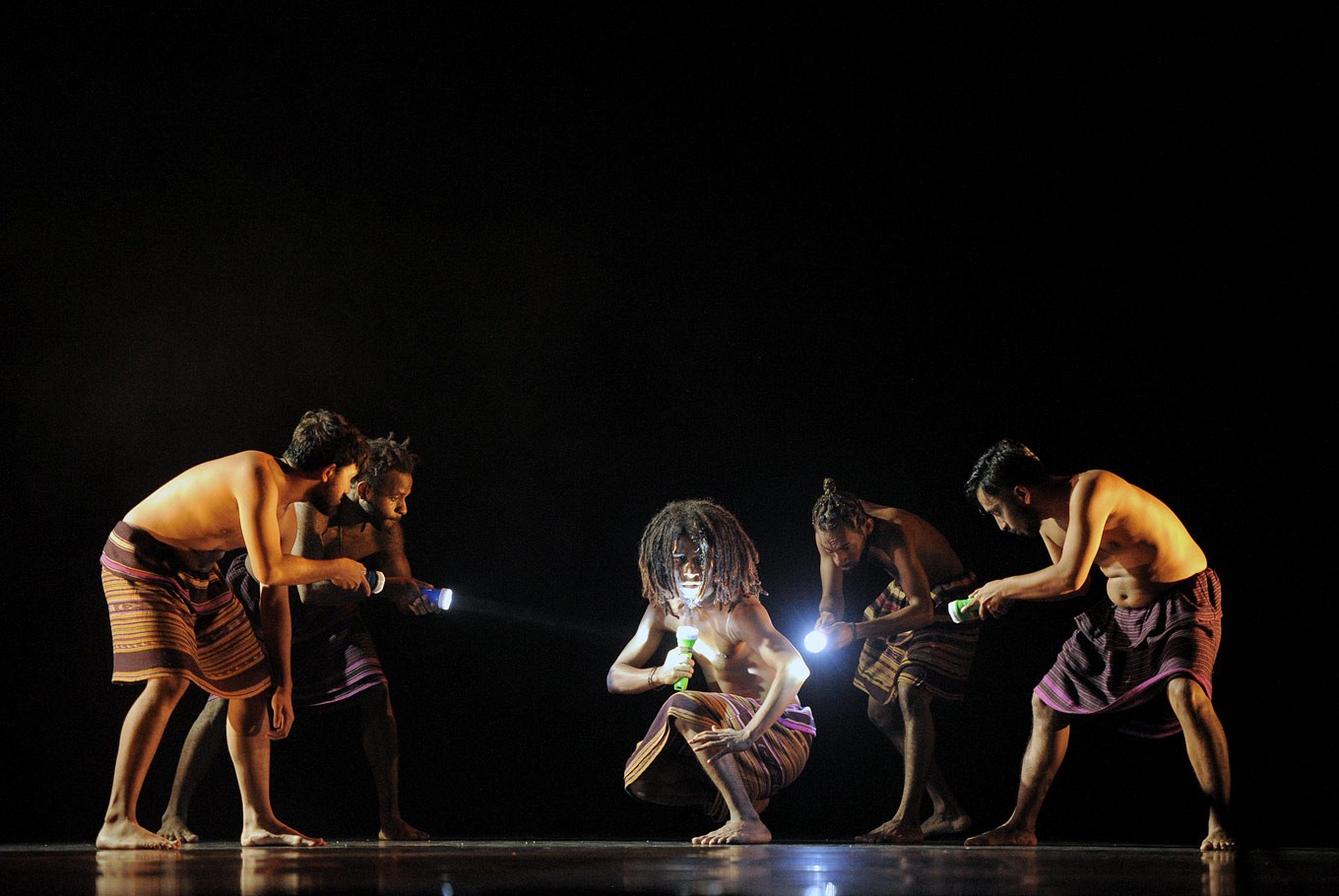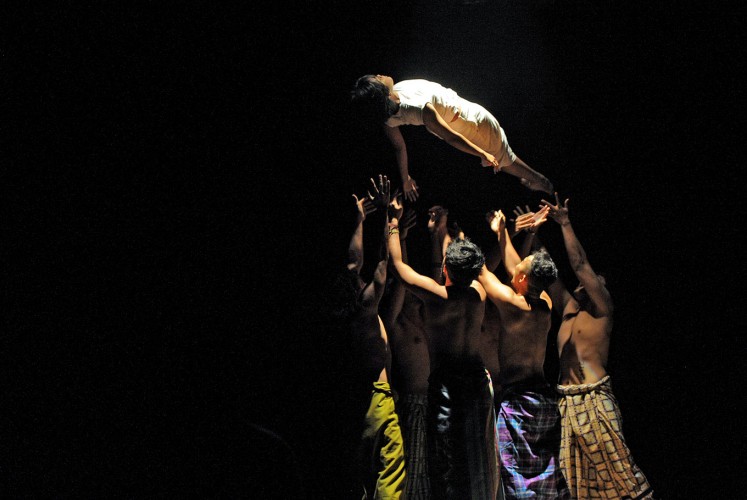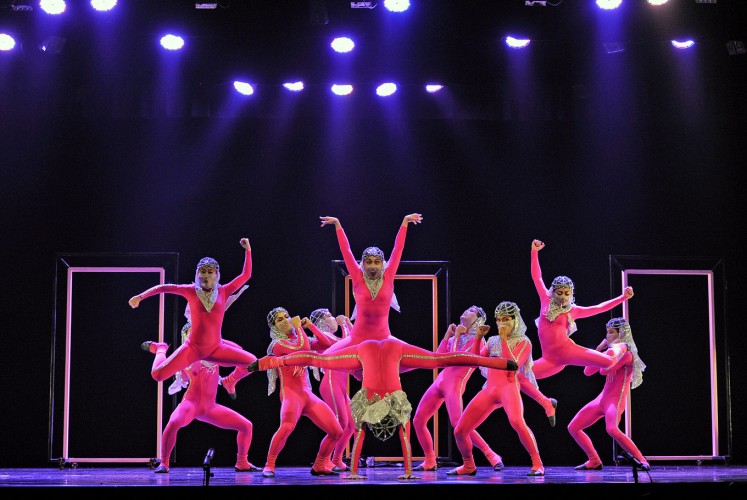Popular Reads
Top Results
Can't find what you're looking for?
View all search resultsPopular Reads
Top Results
Can't find what you're looking for?
View all search resultsJakarta Dance Meet Up #Selection: A captivating, unique blend of dances
For around two hours, dancers from all kinds backgrounds filled the stage.
Change text size
Gift Premium Articles
to Anyone
T
he Jakarta Dance Meet Up (JDMU) #Selection not only draws in a tremendous crowd but also bonds dance communities alike in their lively performance.
Created by the Jakarta Arts Council (DKJ), the JDMU #Selection edition is the successor of last year’s JDMU Regular.
After a stunning performance in 2017, the DKJ curated six choreographers — all with potential to grow — to perform once again in 2018.
After undergoing further training and practice arranged by the council through focus group discussions and a three-day Choreo-Lab, the group of six went to perform their dances, which centered on a variety of themes and sources of inspiration chosen by each choreographer.
“We do not decide what the theme of their performances will be […] This is a very open performance. During selection, when we were choosing the choreographers, they would either improve their previously showcased dances or create something entirely new. This is also something that we do not decide, because this is supposed to be something very open for choreographers,” said Hartati, head of the DKJ dance committee.
Above and beyond: Melo Sang is a dance that was inspired by choreographer Irfan Setiawan’s past, growing up as a son of a pepper farmer. During harvesting and refining of the peppers, one of the steps caught the attention of Setiawan, which led him to make the dance. (Leo Muliadi/File)The energetic performances that took place in the Jakarta Art Building on Aug. 10 featured dances by choreographers Gege Diaz from the Cipta Urban Team, Siti Suryani from Citra Art Studio, Kresna Kurnia Wijaya from EKI Dance Company, Irfan Setiawan from Ali Dance Company, Andhini Rosawiranti from Namarina Dance Academy and Josh Marcy from Indonesian Dance Theater.
For around two hours, dancers from all kinds backgrounds filled the stage.
To start the night, choreographer Gege Diaz took the stage with his Cipta Urban Team to perform an emotional choreography titled Ina Ama (Mother Father). Diaz’s inspiration for this dance is his mother and father, who represent balance in his life. The dance conveys a message of stability in everyone’s existence between the good and the bad.
Up next was the Namarina Dance Academy with their dance titled Energy. Under the choreography of Andhini Rosawiranti, the performance was a combination of contemporary dance routines and ballet.
Through the choreography, Roswiranti hoped to show the characteristics of energy within humans through powerful movements and animated steps.
Behind the dance, a vigorous song played as dancers flitted the stage, changing from black outfits to eye-catching colorful numbers to white bodysuits decorated in black markings.
Identical beings: No Distinction is a dance choreographed by Kresna Kurnia Wijaya that delves deeper into the thinning line between gender roles. (Leo Muliadi/File)Up next was a more traditional dance titled Sedanau by Siti Suryani, which follows a story from Natuna regency in Riau Islands where, during the dry season, the people experience a struggle in their economy and activities as resources cannot be transported to the islands. The choreographer of Citra Art Studio hopes that the dance will allow them to portray those struggling with enthusiasm and effort through harsh times.
Under choreographer Kresna Kurnia Wijaya, the Eki Dance Company performed No Distinction — a dance that describes the blurring line between gender roles.
Dressed in identical bright red ensembles, female and male dancers alike moved flawlessly across the stage to the ever-changing music, ending their dance to RuPaul’s song “Call Me Mother”.
Rooted from simple observation, the Indonesian Dance Theater came up next with a choreography titled Pedestrian by Josh Marcy. This performance was inspired by the human movements in day-to-day life when they are amongst other people and as individuals.
Light in the dark: Gege Diaz with the Cipta Urban Team performs Ina Ama (Mother Father), a dance that talks about the balance in everyone’s life. (Leo Muliadi/File)The choreography also delves deeper into the issue of social inequality, visible through the daily movements of many in the city.
To end the night, the Ali Dance Company took the stage with choreography by Irfan Setiawan. Titled Melo Sang, the dance was inspired by the philosophy of pepper.
Setiawan grew up as the son of a pepper farmer from Bangka Belitung Islands. As a kid, he would spend hours watching his father harvest and refine peppers.
One particular step caught his attention — the soaking and stepping of the peppers — which brought about his inspiration for the movements of this dance. Adorned in sarongs and white numbers, the dancers moved to no music, creating sounds only through their voices as they went about their steps. At one point, they went as far as tossing up one of their dancers to portray the pepper farming process.
Through this edition of the JDMU, the DKJ not only hopes to provide a platform for the Indonesian dance community but also help its members bond through this event.
“The JDMU is actually a forum for choreographers and dance communities in Jakarta to meet up and get to know each other better. We have also published a book where choreographers in Jakarta can find better strategies to develop the dance culture. Mainly we are aiming towards the younger generation with the JDMU,” said Rusdy Rukmarata, a representative of the DKJ.
There will be more to come from the JDMU in the upcoming years as over 40 dance communities are already lining up to join the growing platform.














